Angela van Bengale "Maai or mother Ansiela" and her daughter Anna de Koningh
8th and 7th great-grandmothers of Jesse Haye
Angela was brought to the Cape, via Batavia, with her husband Domingo and their three children onboard of the VOC ship Amersfoort. They arrived with a fleet of ships including the Prins Willem, on 24 February 1657. The fleet had set sail from Batavia on 4th December 1656.This was before the first official slave consignments had been sanctioned. The family had been kidnapped by slave-raiders from Ganges delta area, their north-east India homeland. VOC Commander Pieter Kemp, a Free Burgher from Batavia, who had also been a landdrost there, sold Angela and the children to Jan van Riebeeck and his wife. Van Riebeeck was the first Dutch commander at the Cape. And founder of the Cape colony. He had arrived in Table Bay five years earlier in April 1652, with his three ships, De Reiger, De Drommedaris and De Goede Hoop. His mission was to establish a supply station on behalf of the Dutch East India Company where fresh produce could be cultivated to supply the VOC ships passing through on their way to the East.
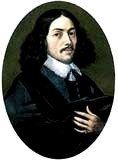
Photo: SA History Online, Iziko Museums of Cape Town
Jan van Riebeeck sold Angela and her children to Abraham Gabbema five years later, on the 19th of April 1662. In the bill of sale no mention is made of her three children, but as Gabbema later liberated her children, they must have been included in the deal. Angela's age is nowhere mentioned and the price has also been omitted in this document.
When Gabbema, who was second in command at the Cape was promoted to Batavia, he signed a document on the 13th of April 1666, liberating Angela and her children 'uit puijre genegentheijt'. Before he left he asked Thomas Christoffel Muller to look after her for the first six months after his departure. Soon after gaining her freedom Angela, asked for and was given a plot of land in the Heerestraat, 57 by 50 feet in area. The deed was signed by Cornelis van Quaelbergen.
On 29 April 1668, Maai Ansiela made the full transition to Burgher society by being baptized as a Christian. On 15 Dec 1669, Angela married the Free Burger Arnoldus Willemsz Basson and thus became a member of the community of free persons ("vryliedengemeenskap").
The freed slave, Angela van Bengale,(Both male and female slaves could submit a request to the Council for manumission. In order to secure freedom however, slaves needed to be baptized, and be able to speak Nederduits. In addition, they needed to provide the VOC with a healthy capable male slave to take their place or pay the Company the amount equal to the value of a strong young male slave.) continued to live the life of a prosperous and respected member of early Cape society, even after Basson died in 1698. Maai Ansiela died in 1720 having lived well into her 70s. At the time of her death, her estate of f6494 (estate of Arnoldus Basson) had more than doubled thanks to her skilful management and now amounted to over 15000 guilders. This was besides her property in Table Valley, livestock, slaves and the small farm Hondswijck in Drakenstein, which the estate sold to Daniel Marais for f820. Angela also owned the farm Kronendal in Houtbay, today it is a restaurant. Description of the sale of her slaves and other possessions Nationaal Archief: 12653 VOC Monsterrol 1700.
Angela had a number of CHILDREN, of which Basson was not the father:
Anna de Koning, father unknown, she married Olaf Bergh.
Jacobus and Johannes van As, their father was most likely Jan van Assen.
CHILDREN OF DOMINGO and ANGELA VAN BENGALE: Jan, Thomas en Claesje
CHILDREN OF Arnoldus Willemsz BASSON and ANGELA VAN BENGALE:
1. Willem baptized Aug 1670, died 30 Jan 1713, married 18 March 1691 Helena Clements
2. Gerrit baptized 12 March 1673, married Johanna Rynick
3. Johannes, baptized 5 May 1675, (died before his mother) married Zacharia Visser
4. Elsie, died young
5. Michiel born 26 Jun 1679, married Maria Daaldons
6. Elsie born 29 Jun 1681, married Reynier van der Sande 7. Maria born 16 May 1683
Throughout her long life Angela had to endure the suicide in 1671 of the Hottentot (the name given to the local Khoi-Khoi tribe) woman (Zara) in her sheep pen; the detention in 1687 of her son-in-law (Olaf Bergh) on Robben Island & banishment thereafter to Ceylon; the execution in 1688 of her son (Jan van As) for kidnapping, stock theft & murder; the sexual indiscretion in 1701 of her son (Jan Basson) with the Widow Putter, resulting in a bastard grandson (Arnoldus Johannes Basson who was later banished in 1739 from the Cape for aiding & abetting Estienne Barbier) & the banishment in 1716 of her grandson (Jan van As) to Robben Island for his undisclosed (unmentionable?) behavior.
View report of some of the Descendants of Angela van Bengale
Maai Ansiela had at least three children while she was a slave. One of her children while still a slave, was her beautiful daughter Anna de Koningh, who married the Swedish Captain, Olaf Bergh in 1677. Anna de Koningh`s portrait is the only one of a former slave of this period that still exists today. Olaf Bergh was close to the elite of the Cape and it seems that he enjoyed a special relationship with both the first and second Governor Simon and Willem Adriaan van der Stel.
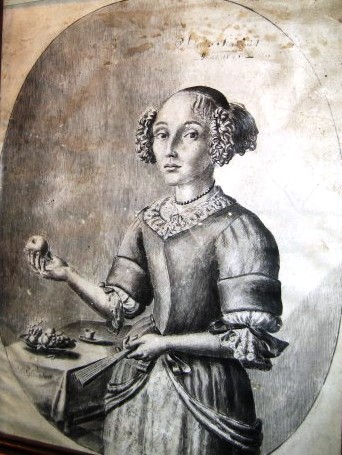
Anna de Koningh, my 7th great-grandmother
Photo: http://www.theresebenade.com
When Anna de Koningh lost her husband in 1724, she inherited the van der Stel property, Groot Constantia. She lived until 1733. Anna de Koningh, born a slave, had become the lady of the Governors manor. Anna had inherited her mother’s beauty and used that to her advantage. She rose from very humble beginnings to become a free and prosperous woman who stood out as a character in early Cape society. Her cupboard is still on show at the Groot Constantia museum.
Thousands of South Africans and others, colored, white and Indo, have Angela van Bengale and her daughter Anna as ancestors. Yet these slave pioneers in South African history remain relatively unknown.
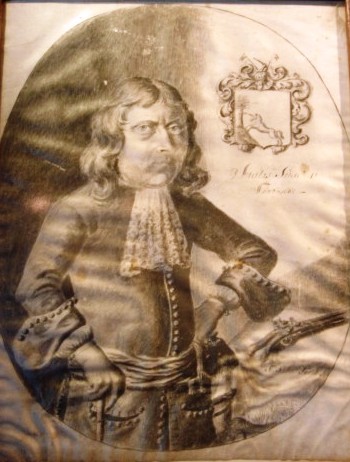
Olof Bergh, my 7th great-grandfather
Photo: http://www.theresebenade.com
Olof Bergh was born to a cadet branch of a Swedish noble house in 1643 in Goteborg, Sweden.Bergh joined the Vereenigde Oostindische Compagnie (VOC) or Dutch East India Company in 1665, serving in Batavia and Ceylon before arriving at the Cape in 1670. Bergh became a prominent and wealthy member of the Cape community. He enjoyed a close relationship with Commander and later Governor Simon van der Stel, something that would become very useful later. (1)
In 1682 Olaf was send out to salvage the Johanna, the first English East Indiaman to be wrecked on the South African coastline. She weighed 550 tons, and was commanded by Captain Robert Brown. She was on an outward bound voyage from the Downs, off south-east Kent, which she had left on the 27th February 1682 in the company of 4 other ships named the Williamson, Nathaniel, Welvaert and Samson, all bound for Bengal except the Johanna destined for Surat. The Johanna went down about 40 miles to the east of the Cape, at about 4 o'clock in the morning of the 8th June, in good but dark cloudy weather. The Johanna's principal cargo consisted of silver specie to the value of 72, 000 pounds (70 chests of pieces-of-eight and silver bullion of the English factories in Bengal). Ten people drowned and 104 people reached Cape Town. Rumors of treasure on board the ship caused Commander van der Stel to send a salvage party, headed by VOC official Ensign Olaf Bergh, to see what they could find. At the site, Bergh found four bodies washed up on shore, which they buried. Besides bottles of Brandy, casks of wine and beer, Bergh found 613 Spanish Reels, which had all washed up on shore. This stimulated Bergh's desire to get out to the wreck and he sent for a carpenter and a slave named Pay Mina, who was a trained pearl diver. Bergh returned to the Castle after successfully salvaging coins to the value of 28, 302 gulden.
Four years later in 1686 Bergh was accused of plundering the wreck of the Portugueseship Nossa Senhora de los Milagros, a case surrounded by a great deal of controversy and mystery. This vessel of 30 guns and 150 men, was commanded by Don Emmanual Da Silva, a close friend of the Portuguese King. The ship was on her way from Goa (India) to Portugal, bearing gifts from King Phra Narai of Siam to Pedro, King of Portugal, Louis XIV of France and Charles XI of England, when it was wrecked at Cape Agulhas. Apart from a large crew, she carried three Jesuit Priests and three Siamese Ambassadors as passengers. Two Ambassadors were among the survivors. All survivors were brought to Kaapstad where they were cared for. When it was discovered that a valuable gold cross with eight diamonds, a silver filigree scent ball and a rosary had been sold to one of the residents by one of the salvagers Arent Hendricks, and company officials unearthed a cache of ship's loot in the garden of Olaf Bergh, shit hit the fan. Bergh was lieutenant and member of the Political Council at the time... He was imprisoned on Robbeneiland for six months (where 300 years later Nelson Mandela would also be incarcerated) and eventually he was banished to Ceylon. However it seems that Anna remained at the Cape. In 1695 Olof was pardoned for his crimes and he was restored to full glory in the Cape community as Captain of the Garrison, member of the Political Council and -- later -- the Council of Justice. See the article written by Leonard D. Lourens. This promotion had to have been the result of networking or ass-kissing in its highest form. Stashed royal loot could also have played a role here I imagine. In any case all the facts surrounding Olof and Anna leave plenty to speculate about. For instance, I wonder if Olof fathered Carolus Erlandt Bergh born 10 Jul 1689 and Johanna Magdalena Bergh born 26 Aug 1691?
Olaf Bergh was one of the wealthiest men at the Cape in his time and a considerable landowner. His properties included the farm De Kuilen (today Kuilsriver), a house on the Heerengracht in Kaapstad, another house behind it, a house near the Grote Kerk, a house in Table Valley, the farm Constantia and two bungalows in Piquetberg. How much of this wealth was from loot from the shipwrecks is anyone's guess. I cannot imagine how an official could earn enough to buy all these holdings with his salary alone.
In 1684 Bergh owned four male slaves, a female slave and two slave children. Anthonie van Angola bought the slave Sijmen Ham van Madagascar for 85 Rds from Bergh. In 1700 Bergh sold the slave Arend van Bengale to his mother-in-law for 70 Rds. In 1702 the freeburgher Christoffel Armbrecht agreed to purchase a slave for Bergh in exchange for another slave belonging to Bergh whom he wanted to marry. Christoffel already had a child with her and was raising the child as his own. Olof Bergh died in 1724 in Kaapstad, and his wife Anna de Koningh died there nine years later.
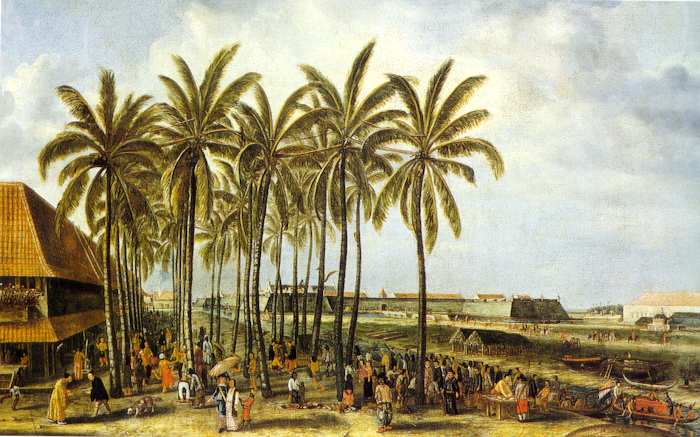
Batavia
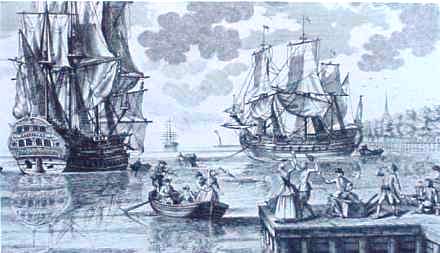
Departure from the Cape of VOC ships
1. Like Anna de Koningh, Simon van der Stel was of mixed European and Indian blood. Simon was the son of Adriaan van der Stel, an official of the VOC, and Maria Lievens, daughter of a freed Indian slave woman known as Monica of the Coast of Goa, or Monica da Costa. Simon was born at sea on 14 October 1639 while his parents were on their way to Mauritius from Batavia. His father was posted there, where the family remained for about seven years. Eventually they returned to Batavia, where Simon remained until he was twenty years old. In 1679, he was appointed "Commander" of the VOC's colony at the Cabo da Boa Esperanca. (Portuguese was the lingua franca in the Indies) There he founded Stellenbosch and Simonstad and introduced viticulture on his farm Rustenburg at Rondebosch. Together with Jan van Riebeeck, he laid the foundations for the modern viticulture in South Africa today. He died at his estate Constantia in 1712.
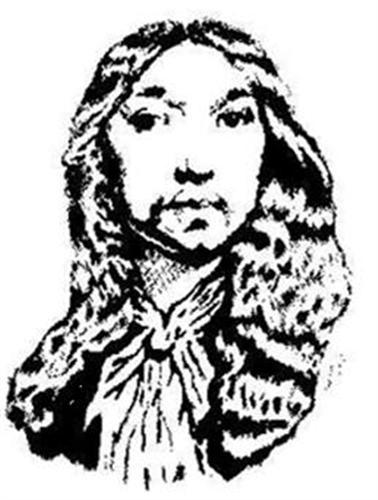
Simon van der Stel
JG le Roux and WG le Roux, Ons Drakensteinse Erfgrond: Groot Drakenstein JA Heese & RTJ Lombard Suid-Afrikaanse Geslagregister, Vol IW Blommaert "Het Invoern van de Slavernij aan de Kaap", Archive Year Book of South Africa, Vol I, 1938, p 6
Familia XVI, p 23: CapeArgus, Government Gazette: Heese en Lombard
Ad Biewenga,De Kaap de Goede Hoop -- Een Nederlandse vestigingskolonie 1680 -1730: Karel Schoeman, Armosyn van die Kaap: Die Węreld van 'n slavin 1652 - 1733: GC de Wet. 1981. "Die Vryliede en vryswartes in die Kaapse Nedersetting 1657 - 1707. Cape Town: Historiese Publikasievereniging. p. 205. "Nossa Senhora dos Milagros 1686" Cape Times weekly magazine of January 11th 1969. Story written by Leonard D. Lourens. :Transkripsies uit die VOC-verhaleskat deur Helena Liebenberg Spreekbeurt voor die Orde van den Prince, Afdeling Kaap de Goede Hoop, Huis der Nederlanden, 3 Mei 2008
http://www.safrica.info/about/history/mixedmarriages-genealogy.htm
http://www.iziko.org.za/sh/resources/slavery/slavelodge_life.html
http://www.sahistory.org.za/pages/governence-projects/slavery/slavery.htm
http://www.south-africa-tours-and-travel.com/slaves-in-south-africa.html
http://www.kleinconstantia.com/history.htm
http://www.sahistory.org.za/pages/people/bios/vanRiebeek,j.htm